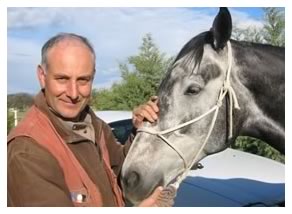
Home › Girth Pain & Dysfunction › Diagnosis & Treatment
Diagnosis and Treatment of Girth Pain Syndrome
Combining the expertise of veterinarians and registered human chiropractors and osteopaths who have had special training in the diagnosis of girth pain syndrome, particularly graduates of the RMIT University Graduate Diploma in Animal Chiropractic, and an equine behavioural specialist, is very important in the diagnosis and treatment of girth pain syndrome. In addition to spinal dysfunction, issues of foot pain, leg lameness, saddle fit, and especially behaviour, can all contribute to the syndrome, and thus all need to be dealt with.
Treatment Options
Using Willoughby Veterinary Chiropractic to free up the motion of the upper chest & ribcage, with the aim of returning the function of the nervous system to normal, is very effective in alleviating girth pain and paraesthesia.
Many therapies can be used to ease the pain and dysfunction associated with girth pain syndrome. Below are just some of the therapies that can help.
- Willoughby Veterinary Chiropractic. The most effective and long lasting treatment that I have seen is Willoughby* veterinary chiropractic adjustment of the joints between the affected vertebra, and of the vertebrae and rib. It appears to work at the heart of the problem, not just the symptoms. (Using true bony chiropractic to “adjust” only the affected joints, and not leg pulling or massage “chiropractic”). Improvement is usually immediate, and at times the results are nothing short of spectacular. See Chart 1 for experimental results.
- Osteopathic techniques that gently improve the flexibility of the ribcage by inducing relaxation of the tight muscles and joints can work very well.
- Acupuncture is very effective in settling down the affected joints and muscle knots, and so the combination of these therapies gives a much-enhanced result.
- Massage of the girth and wither area is helpful and will, where tolerated, at least give temporary relief. Some skilled massage therapists claim to produce long- term alleviation of the signs of girth pain.
- Postural adjustment via rider balance, and training under lunge and on the arena, can also reduce the twist of the ribcage, and thus alleviate the problem. Usually one lead, or foreleg, is favoured when there is girth pain.
- “Shoulder in” exercise is one of the most useful exercises that can be used to get horses to better flex their rib cage, and can help to maintain ribcage flexibility once the spinal mobility faults and pain have been resolved.
- Behavioural modification. Pain leads to avoidance behaviour, such as biting when girthed up, stiffening with leg pressure, resistance to adopting one lead, inflating the chest and refusing to go forward. Pain also increases anxiety and fear, which often lead to other undesirable behaviour. Our reaction to the different abnormal or undesirable behaviour may in fact feed their development. The result is often the growth of a complex set of behavioural patterns, which need to be re-trained, once the pain has been resolved. Making use of the services of a professional equine behaviour specialist can thus be an invaluable part of resolving the broader behavioural issues involved with girth pain syndrome.
Note: Chronic foot problems, hoof imbalance or favouring one leg, pelvic twists and falls, bad teeth, girths, saddles, bits, riders etc may cause the problem to return.
Management Options and Self Help
- TENS or Faradic machines may be used to break the pain cycle associated with the affected nerves. These often give considerable relief if used under appropriate instruction. The results, however, are removal of the obvious symptoms, rather than the cause.
- Mounting from a block, or some other support, is mandatory for the health of the wither area, no matter how light the rider is. Where a block cannot be used, it is best to practice getting on from each side.
- Saddles that are too narrow or too wide at the wither and saddles that grip high in the wither should be avoided – they make the wither component of the problem worse, as well as crippling the wither of the horse.
- Using a broad, cushioned girth, that has 10-15cm of elastic at each end, can increase you horse’s comfort and reduce the chance that an underlying problem will be aggravated if the horse has a fall when being ridden. (Avoid over tightening the girth – easy to do with elastic or western cinch systems.)
- Stretches: encouraging your horse to stretch its topline with exercises that ask the horse to pick up the front of its chest and bend its neck around out wide can help a great deal. These ease the tension that contributes to the pain and dysfunction. The neck exercise that involves the horse nibbing a carrot between its legs also helps to ease this tension. Stretching out each foreleg is useful for the foreleg component of the syndrome. Stretches should not be attempted until your horse is warmed up and should be done gently.
- Use of “Mirotec” bibs can help warm up the affected area, reducing the initial stiffness associated with the vertebral dysfunction.
Conclusion
“Girthy” behaviour is only the tip of the iceberg. This is a major problem of horses. Horses are suffering pain, their performance is reduced, and their behaviour is often adversely affected, and at times, dangerous. For the sake of both the horse and rider, this problem needs treatment that is aimed at the cause, rather than just being managed.
*Dr Sharon Willoughby DVM, DC is the founder of the American Veterinary Chiropractic Association, and a pioneering developer and teacher of veterinary chiropractic.
To find a university trained veterinary chiropractic practitioner check the practitioner lists of the Australian Veterinary Chiropractic Association at www.avca.com.au
